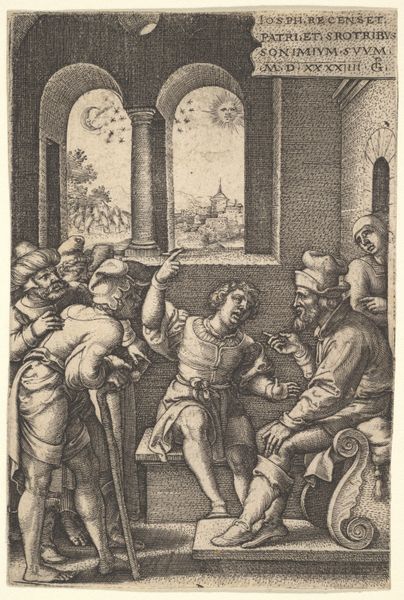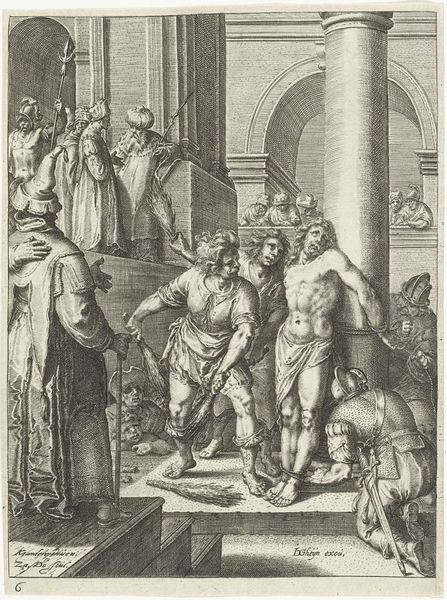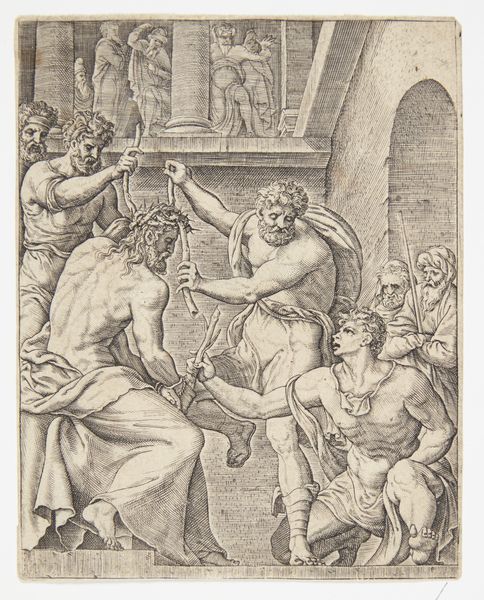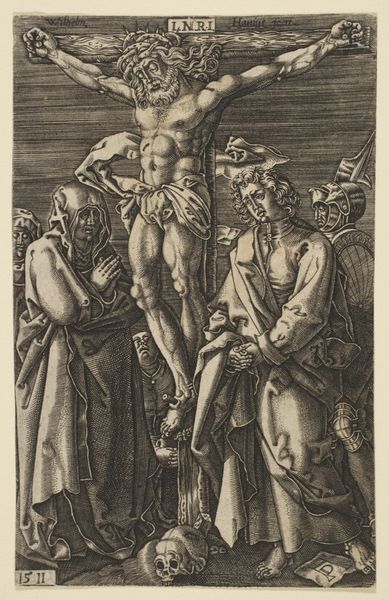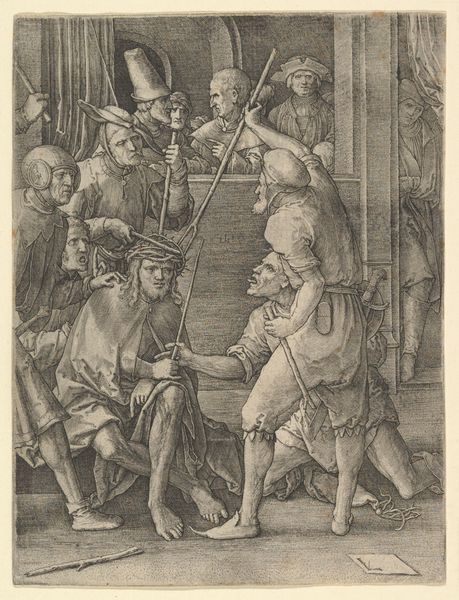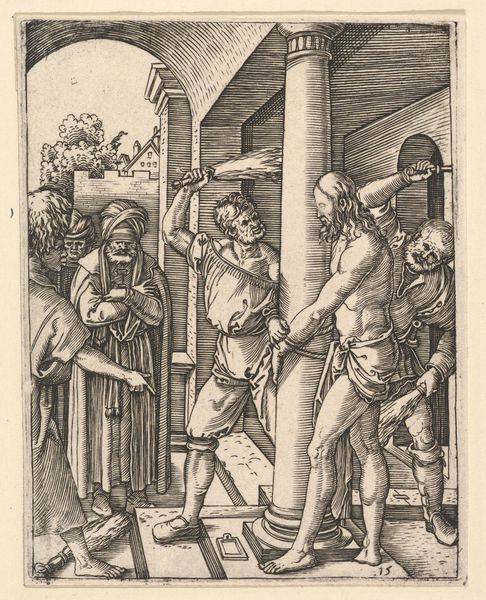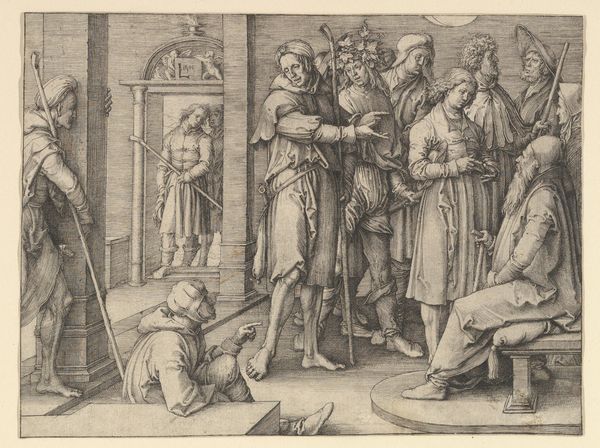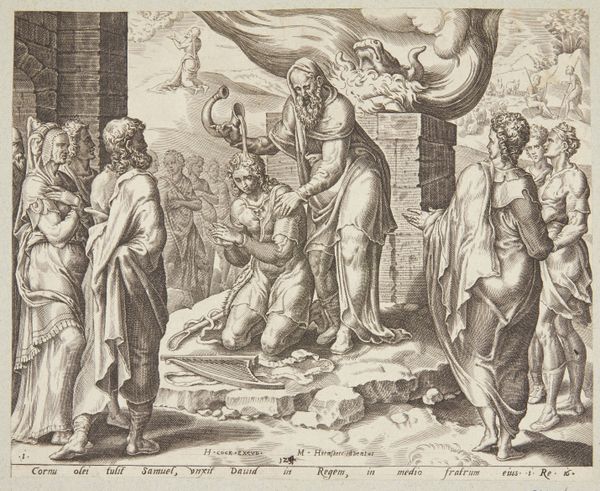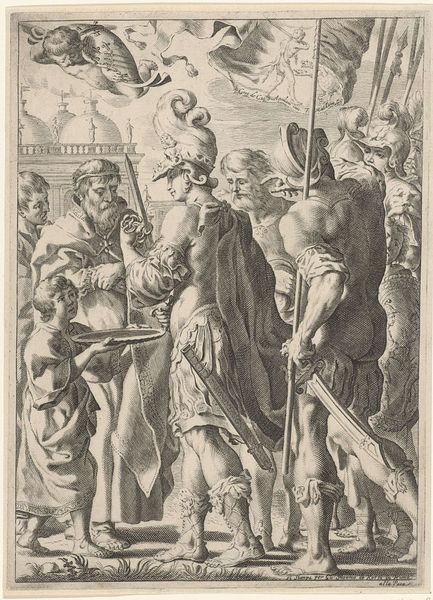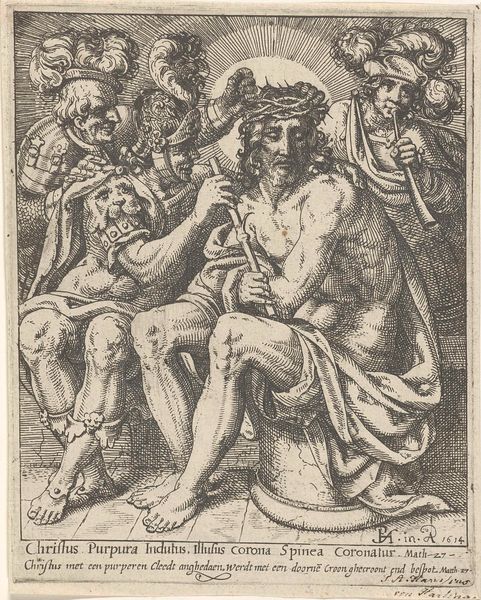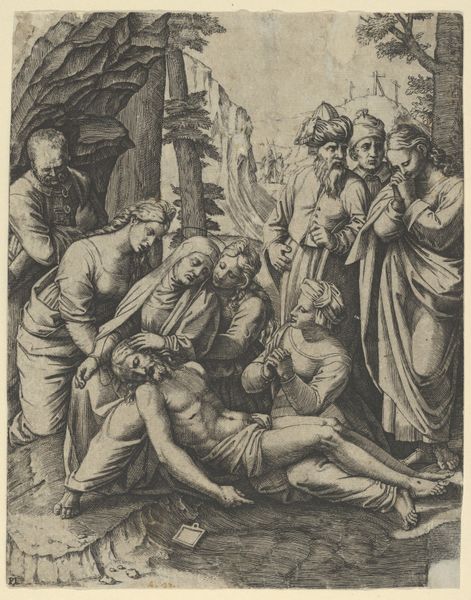
print, engraving
# print
#
figuration
#
romanesque
#
history-painting
#
engraving
Dimensions: plate: 27.9 x 19.7 cm (11 x 7 3/4 in.) sheet: 28.9 x 20.5 cm (11 3/8 x 8 1/16 in.)
Copyright: National Gallery of Art: CC0 1.0
Hans Weiner created this print, "Ecce Homo", sometime in the late 16th or early 17th century. The image depicts a moment from the Passion of Christ, "Ecce Homo", which translates to "Behold the Man". Weiner’s image creates meaning through visual codes, cultural references, and historical associations. Consider the social conditions that may have shaped its production. Germany at this time was undergoing significant religious and political upheaval due to the Reformation. Artists often found themselves navigating complex patronage systems, working for both Protestant and Catholic clients. Prints like this one played a crucial role in disseminating religious imagery and shaping public opinion during this period. By studying Weiner's print, along with related historical texts and documents, we can gain a deeper understanding of the complex social and institutional context in which it was created.
Comments
No comments
Be the first to comment and join the conversation on the ultimate creative platform.
